Abstract
Pseudomonas aeruginosa strain GT424, derived by the transfer of plasmid R45 to strain GT1, was shown to have an Era+ phenotype (enhanced recipient ability) for enterobacterial plasmids from incompatibility (Inc) groups C, FI, FII, J, N, W, and X. Increase in transfer frequency ranged from 10 to 10(6)-fold. Plasmids of IncFII, IncJ, and IncX were found to be transmissible only to the Era+ strain. Plasmids of Inc groups A-C, M, and T transferred at low frequency (less than 10(-7)) to both GT1 and GT424 and did not respond to the Era+ character of the latter. Also not responsive to the Era character were plasmids R144drd3 (IncI alpha) and RP1 (IncP), which transferred to both GT424 and GT1 at intermediate (10(-4)) and high frequencies (10(-1)), respectively. All plasmid-mediated antibiotic resistances that could be measured as well as UV resistance and susceptibility were found to be expressed in P. aeruginosa. Plasmid-coded phage susceptibilities, however, generally were not phenotypically manifested in the P. aeruginosa strains. The physical structure of plasmids in P. aeruginosa could be classified into four major types. Some of the plasmids underwent additions or deletions and were unstable; the majority, however, appeared to integrate into the chromosome. Some members of IncN, IncC, IncJ, and IncP were found to be transmissible from P. aeruginosa back to Escherichia coli. This is the first report of the successful transfer to P. aeruginosa of plasmids from many of the Inc groups that have been defined in Enterobacteriaceae, namely, FI, I alpha, J, M, T, and X.
Full text
PDF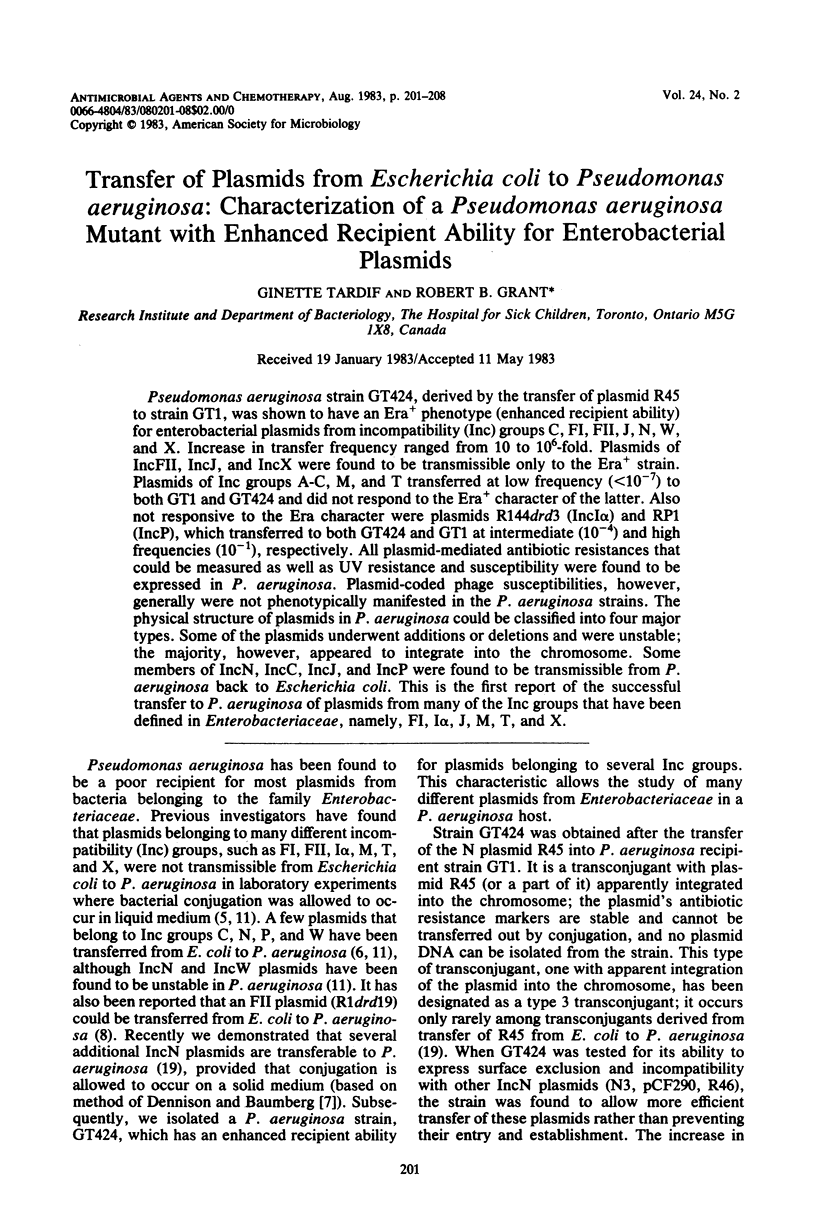
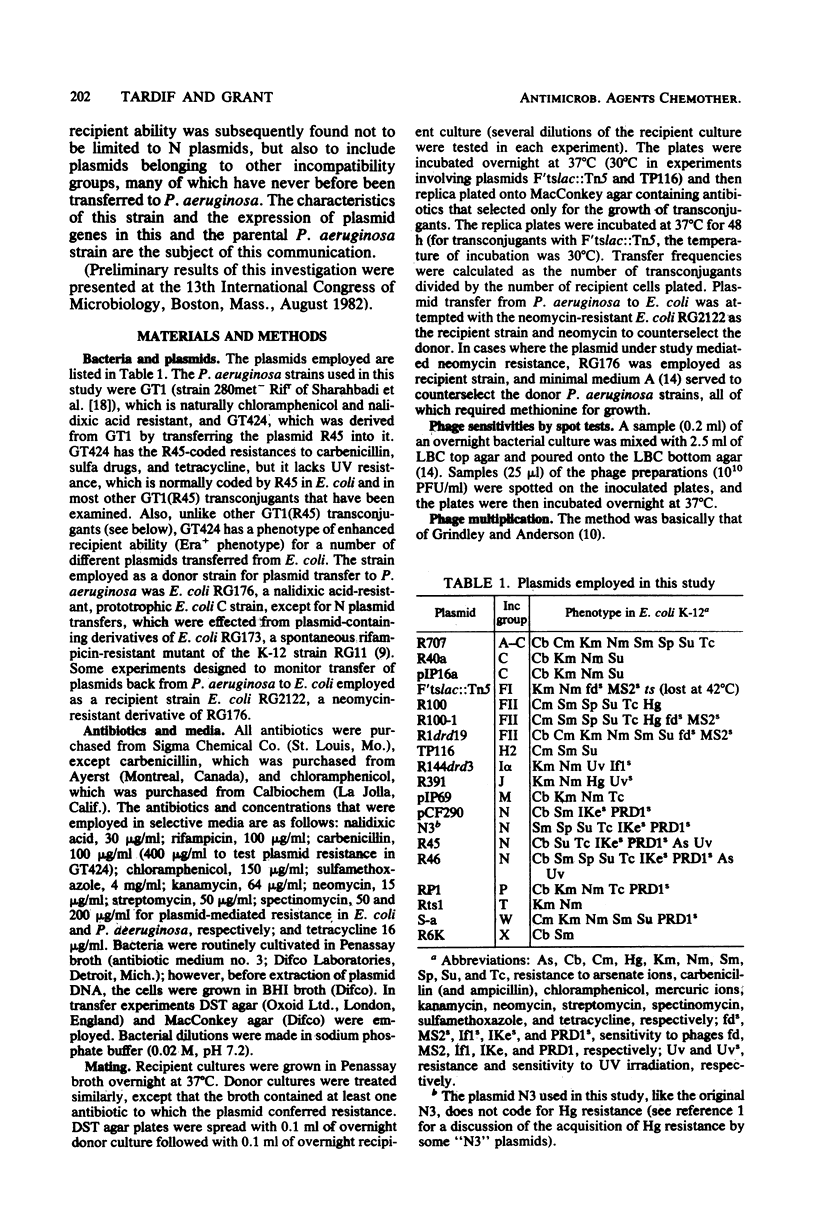
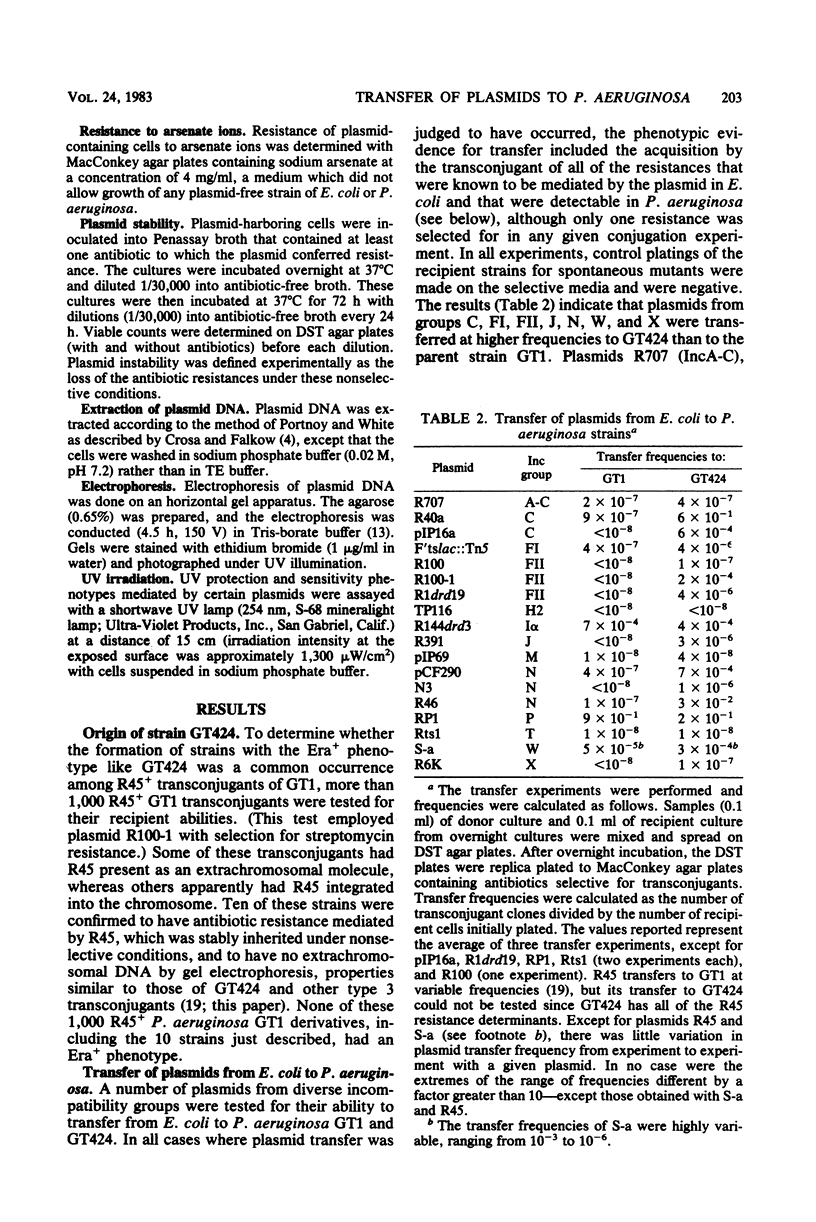
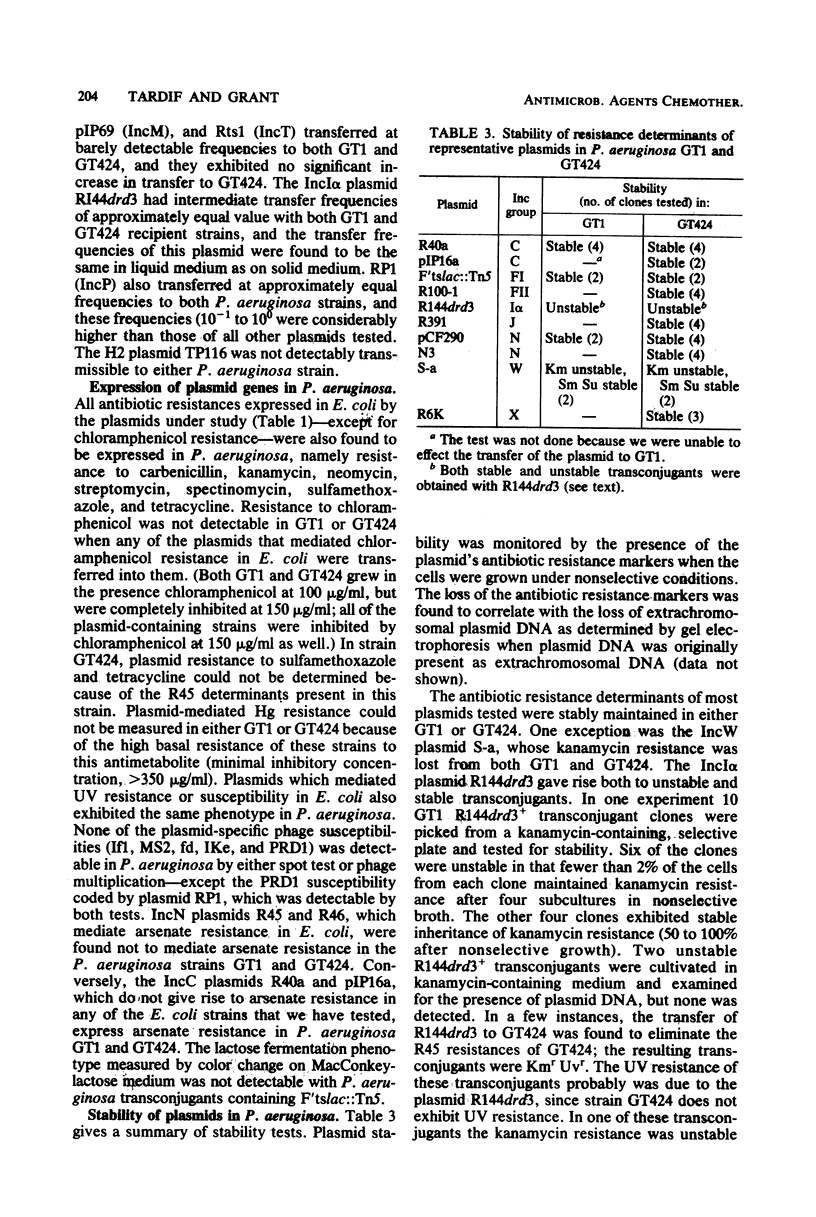
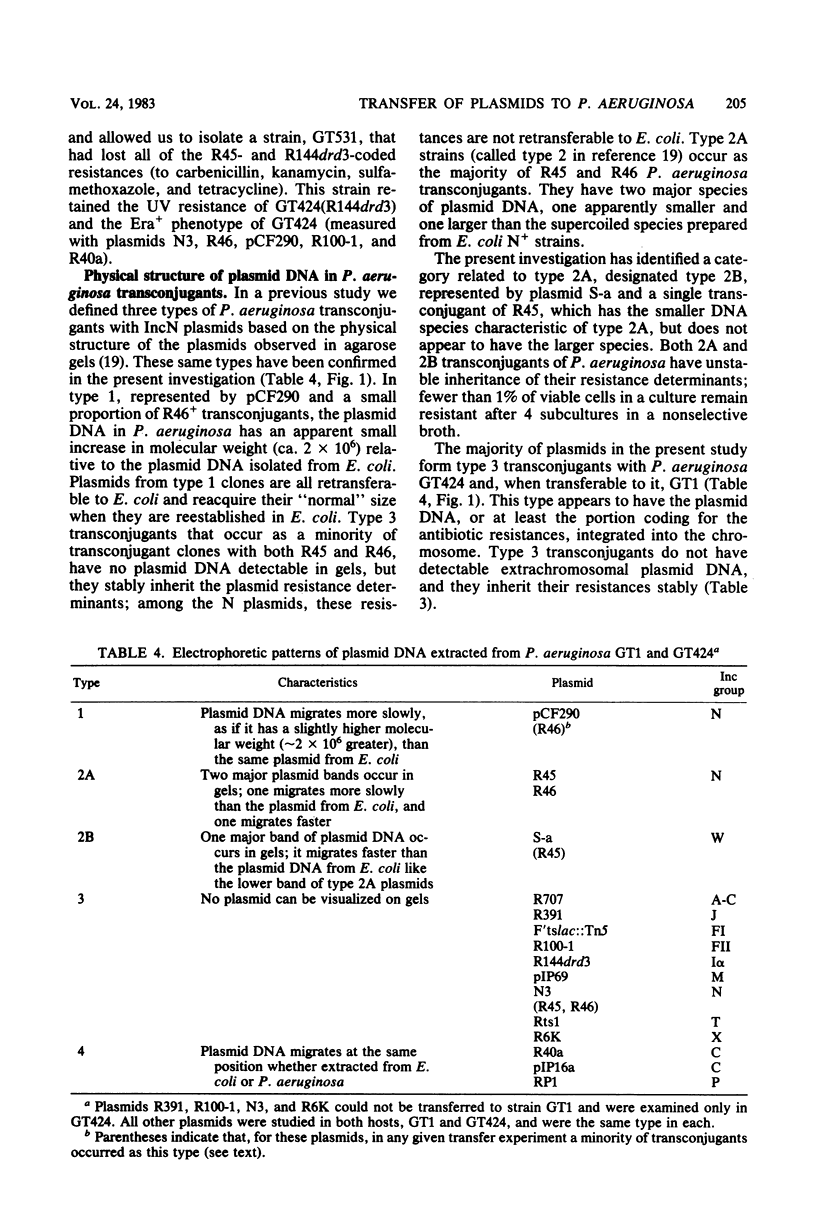
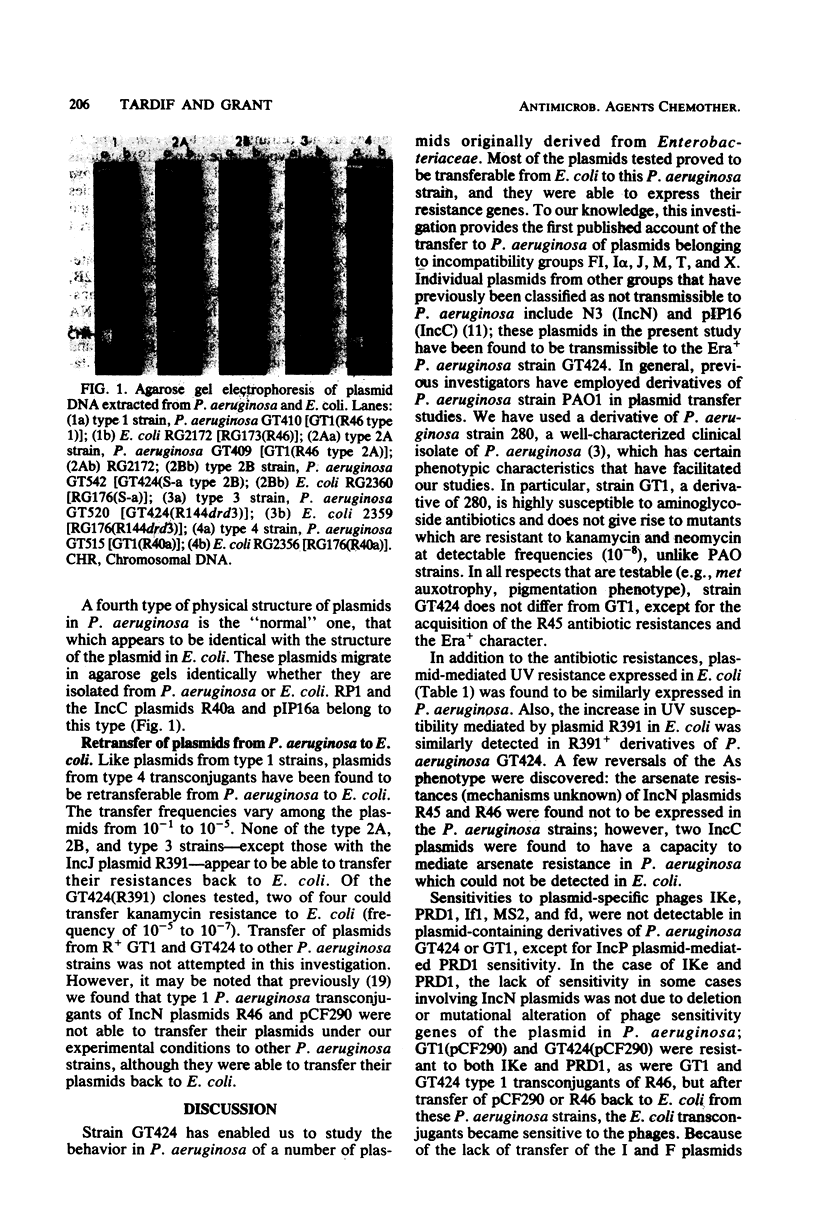
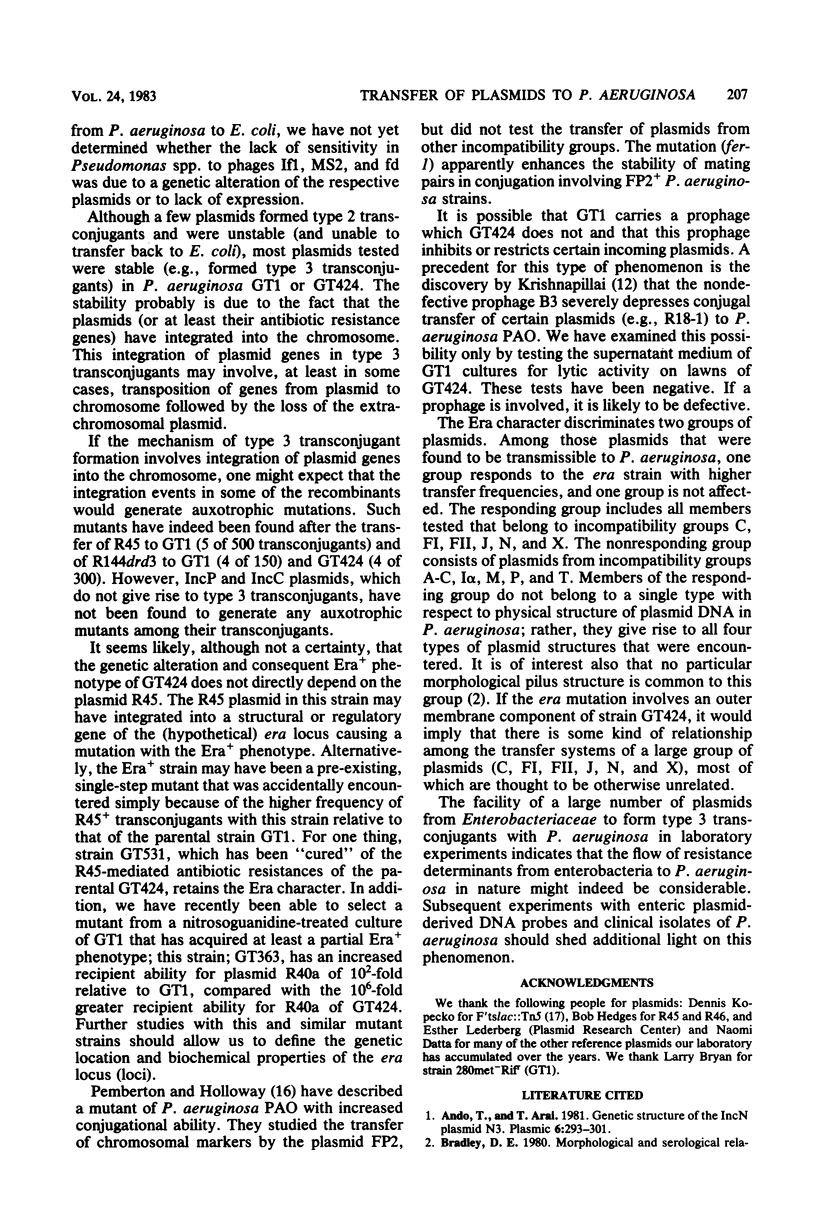
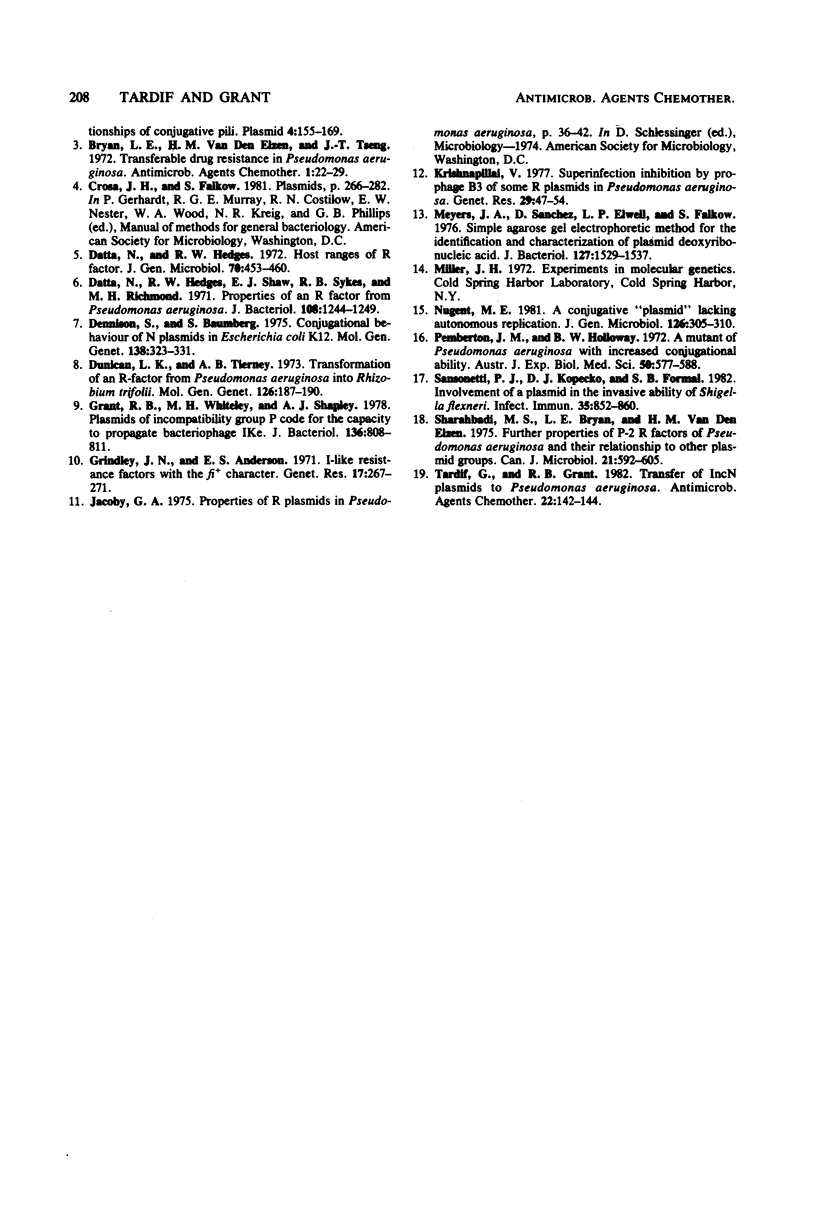
Images in this article
Selected References
These references are in PubMed. This may not be the complete list of references from this article.
- Ando T., Arai T. Genetic structure of the IncN plasmid N3. Plasmid. 1981 Nov;6(3):293–301. doi: 10.1016/0147-619x(81)90037-8. [DOI] [PubMed] [Google Scholar]
- Bryan L. E., Van Den Elzen H. M., Tseng J. T. Transferable drug resistance in Pseudomonas aeruginosa. Antimicrob Agents Chemother. 1972 Jan;1(1):22–29. doi: 10.1128/aac.1.1.22. [DOI] [PMC free article] [PubMed] [Google Scholar]
- Datta N., Hedges R. W. Host ranges of R factors. J Gen Microbiol. 1972 May;70(3):453–460. doi: 10.1099/00221287-70-3-453. [DOI] [PubMed] [Google Scholar]
- Datta N., Hedges R. W., Shaw E. J., Sykes R. B., Richmond M. H. Properties of an R factor from Pseudomonas aeruginosa. J Bacteriol. 1971 Dec;108(3):1244–1249. doi: 10.1128/jb.108.3.1244-1249.1971. [DOI] [PMC free article] [PubMed] [Google Scholar]
- Dennison S., Baumberg S. Conjugational behaviour of N plasmids in Escherichia coli K12. Mol Gen Genet. 1975 Jul 10;138(4):323–331. doi: 10.1007/BF00264802. [DOI] [PubMed] [Google Scholar]
- Dunican L. K., Tierney A. B. Transformation of an R-factor from Pseudomonas aeruginosa into Rhizobium trifolii. Mol Gen Genet. 1973 Nov 2;126(2):187–190. doi: 10.1007/BF00330993. [DOI] [PubMed] [Google Scholar]
- Grant R. B., Whiteley M. H., Shapley A. J. Plasmids of incompatibility group P code for the capacity to propagate bacteriophage IKe. J Bacteriol. 1978 Nov;136(2):808–811. doi: 10.1128/jb.136.2.808-811.1978. [DOI] [PMC free article] [PubMed] [Google Scholar]
- Grindley J. N., Anderson E. S. I-like resistance factors with the fi+ character. Genet Res. 1971 Jun;17(3):267–271. doi: 10.1017/s0016672300012295. [DOI] [PubMed] [Google Scholar]
- Meyers J. A., Sanchez D., Elwell L. P., Falkow S. Simple agarose gel electrophoretic method for the identification and characterization of plasmid deoxyribonucleic acid. J Bacteriol. 1976 Sep;127(3):1529–1537. doi: 10.1128/jb.127.3.1529-1537.1976. [DOI] [PMC free article] [PubMed] [Google Scholar]
- Nugent M. E. A conjugative 'plasmid' lacking autonomous replication. J Gen Microbiol. 1981 Oct;126(2):305–310. doi: 10.1099/00221287-126-2-305. [DOI] [PubMed] [Google Scholar]
- Sansonetti P. J., Kopecko D. J., Formal S. B. Involvement of a plasmid in the invasive ability of Shigella flexneri. Infect Immun. 1982 Mar;35(3):852–860. doi: 10.1128/iai.35.3.852-860.1982. [DOI] [PMC free article] [PubMed] [Google Scholar]
- Shahrabadi M. S., Bryan L. E., Van Den Elizen H. M. Further properties of P-2 R-factors of Pseudomonas aeruginosa and their relationship to other plasmid groups. Can J Microbiol. 1975 May;21(5):592–605. doi: 10.1139/m75-086. [DOI] [PubMed] [Google Scholar]
- Tardif G., Grant R. B. Transfer of IncN plasmids to Pseudomonas aeruginosa. Antimicrob Agents Chemother. 1982 Jul;22(1):142–144. doi: 10.1128/aac.22.1.142. [DOI] [PMC free article] [PubMed] [Google Scholar]



